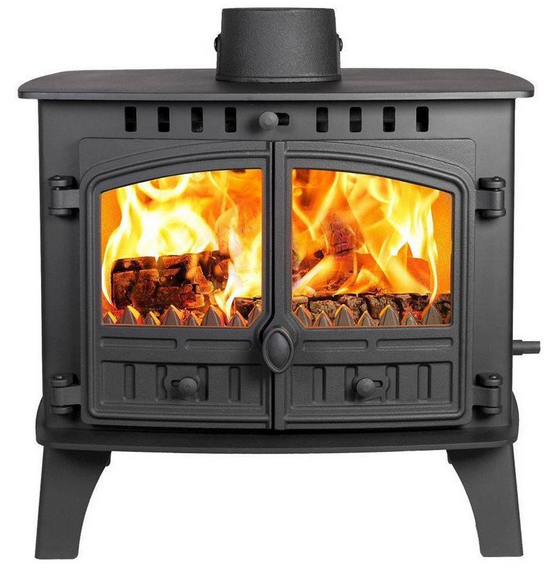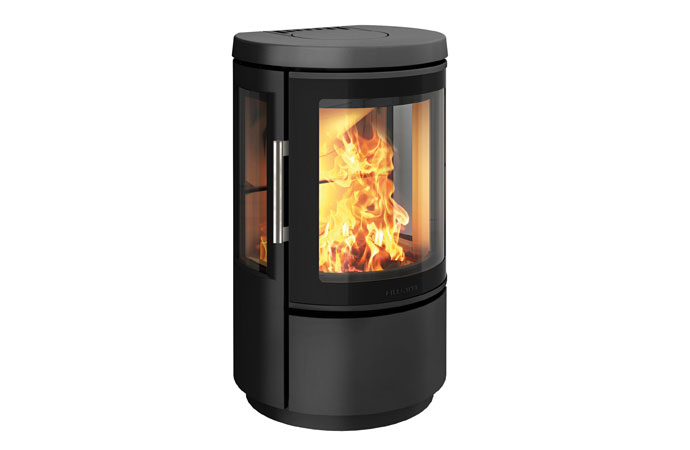As you will expect, we are asked many questions by customers looking to buy wood-burning stoves which of course we welcome. One of the most popular questions relates to how using a wood-burning stove might impact a customer’s heating bills. In reality, the impact that a woodburner may have on your heating bills will depend upon a variety of different issues.
Energy Saving Trust
The Energy Saving Trust is a well-respected body which has access to in-depth information regarding energy use across the UK. The simple advice from this body is that installing a wood-burning stove can reduce your energy bills by 10%. The situation will vary from customer to customer, from area to area with a lot of emphasis on how the machine is used.
Burning the correct fuel
As we have touched on time and time again, burning non-recommended fuel and wet wood is not only damaging to your stove but also highly cost ineffective. There are also potential issues with the creation of additional gases which can have a material impact upon the health of those in the vicinity. When it comes to wet wood, far too much energy is used drying the wood before it can be burned to create heat. So, using the correct type of fuel will have a significant impact upon your potential heating bill savings.
Maintaining your stove
From the outside looking in, all stoves look fairly sturdy and many people are surprised at the potential efficiency gains from a well maintained/repaired machine. Any element of your stove which is damaged will impact the ability to maintain the heat within the body of the stove and release it in a controlled manner. For example, if your fire bricks are cracked and need replaced then heat will escape in an uncontrolled manner, impacting the outer layer of your wood burner and causing an array of inefficiencies.
Boiler stove
While many people initially shown interest in using their woodburner as a means of heating water in their homes, very few actually pursue this to its conclusion. It is nowhere near as difficult as many people assume, to switch from a traditional boiler system to one which is powered by your wood burner. The wood-burning stoves/boiler stoves available today are highly efficient devices which are extremely durable and reliable. It is worth investigating the use of boiler stoves further and the potential savings they can create.

Using your stove correctly
Those with limited experience of using wood-burning and multifuel stoves will likely have a temptation to fill the firebox with as much fuel as possible. What can go wrong? These are durable machines which can take serious heat. Well, there is such a thing as over fuelling and overheating your stove!
If you refer to your manufacturers guide you will see there is an optimum temperature at which your stove is as efficient as it can possibly be. Under fuelling the stove, or indeed over fuelling your stove, will reduce the efficiency and thereby more fuel will be required. This will obviously have an impact upon your heating bills and your overall potential savings. There are some very simple thermostat devices which you can add to your flue pipe to indicate under heating and overheating of your machine. You will very quickly learn the correct amount of fuel to use and how changing this will impact the efficiency of your stove.
False cost savings
There will come a point when you may notice a small crack in the stove glass door, perhaps the seals of the stove body are not what they used to be or one of the fire bricks has cracked in half. As long as there is “no real damage” many people may brush off these relatively innocuous repairs until some point in the future. However, as we touched on above, the cumulative impact of wear and tear and growing inefficiencies within your stove will have a material impact upon your heating bills in the longer term.
If a part needs replaced, replace it, think about potential savings lost by putting off the purchase of a replacement part. Yes, you may save yourself a few pounds in the pocket in the short term but the likelihood is that you are losing more as a consequence of an inefficient stove. Don’t bury your head in the sand, get that part today!
Summary
There is no simple answer to the potential savings available from using a wood-burning stove. As we have touched on above, there are many different factors to take into consideration. What we would say is that if a part needs replaced, replace it as soon as possible as it will be impacting the overall efficiency of your machine. Looking at the modern day wood-burning stove from the outside it looks as if they have not changed for decades. However, take a look at the inside and you will see improved efficiencies, improved safety and a highly tuned machine.
If your car had a flat tyre would you replace it there and then? If your stove has a broken part, it would make sense to do the same.

